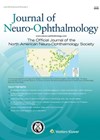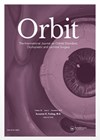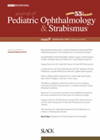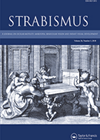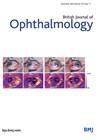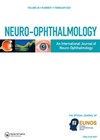
Journal Reviews archive for 2024
Transsynaptic retrograde degeneration linked to homonymous visual field loss after stroke
centre, of individuals identified with homonymous visual field loss post ischaemic stroke. Exclusion criteria were bilateral ischaemia, anterior / pregeniculate visual pathway affected and other pathology with the potential to effect visual fields. The following were extracted from the medical...
Intermittent manual compression for CCF
Carotid cavernous fistulae (CCF) can be classified as high and low-flow or as having direct and indirect communication. Most commonly, management of high-flow CCF is with endovascular embolisation. The authors look at an alternative treatment for CCF in indirect low-flow...
Potential gender and degree of deviation bias regarding perceived urgency for surgery
This study aimed to define potential factors that influence the perceived urgency of strabismus surgery by ophthalmologists. This was a survey study which comprised questions regarding demographics of the ophthalmology respondents and a ranking of eight photos of adults with...
Features and outcomes of pulled-in-two syndrome
Pulled-in-two (PIT) syndrome is a sudden rupture of the extraocular muscle during strabismus surgery, typically with minimal tension intraoperatively without excessive force. This is a rare occurrence and this study reports cases from a single centre over a seven-year period....
Comparison of five IOL formula for paediatric eyes
There is no consensus on the most suitable intraocular lens formulas for paediatric eyes to provide consistent postoperative results. This study compared modern IOL formulas to identify the smallest mean prediction error among them: Hill-RBF 2.0, Barrett Universal II (BUII),...
Parental feedback on their needs from eye services for children with congenital cataracts
The aim of this study was to analyse non-directed parental feedback to health care providers responsible for paediatric cataract care in Sweden. This was a cross-sectional study including open-ended questions. Ninety percent were mothers, and most from Sweden (82.5%) with...
Features, treatment and prevention of conjunctival inclusion cysts
Conjunctival inclusion cyst is a rare complication of strabismus surgery and generally develops at the point of muscle reattachment, caused by implantation of conjunctival epithelium. The authors aimed to determine the rate of its development after strabismus surgery and consider...
Persistent subretinal fluid (PSFF) in pneumatic retinopexy (PNR) versus pars plana vitrectomy (PPV) for rhegmatogenous retinal detachment (RRD): posthoc analysis of the PIVOT randomised trial
This is a posthoc study of the PIVOT randomised trial over a 12 month period, to evaluate the functional outcomes of the incidence of PSF in PnR versus PPV following RRD surgery. One hundred and fifty-eight patients were recruited and...
OCTA optic disc measurement differences between glaucoma and pituitary macroadenoma
This prospective case-control study aimed to assess the potential of optical coherence tomography (OCT) and OCT angiography (OCTA) in distinguishing between glaucoma and pituitary macroadenoma based on optic disc appearance. Thirty-one patients (23 with glaucoma, eight with pituitary macroadenoma) were...
Changes in C:D ratio of premature infants with enlarged C:D ratios
This retrospective observational study examined the longitudinal alterations in cup to disc ratio (CDR) among premature infants exhibiting enlarged CDR and normal intraocular pressure (IOP) up to two years. Among the 283 infants, 13.4% manifested an enlarged CDR. In this...
The risk factors associated with isolated microvascular third nerve palsy
The authors used the Rochester Epidemiology Project for this retrospective case review of third nerve palsy. Inclusion criteria was adults >18 years, with new onset isolated microvascular third nerve palsy diagnosed within a 36-month period, with recovery or significant improvement,...
Likelihood of developing multiple sclerosis after optic neuritis diagnosis
Optic neuritis (ON) is a relatively common cause of acute optic neuropathy in young patients which often presents as the first sign of multiple sclerosis (MS). There is a lack of evidence around the factors that are associated with the...

